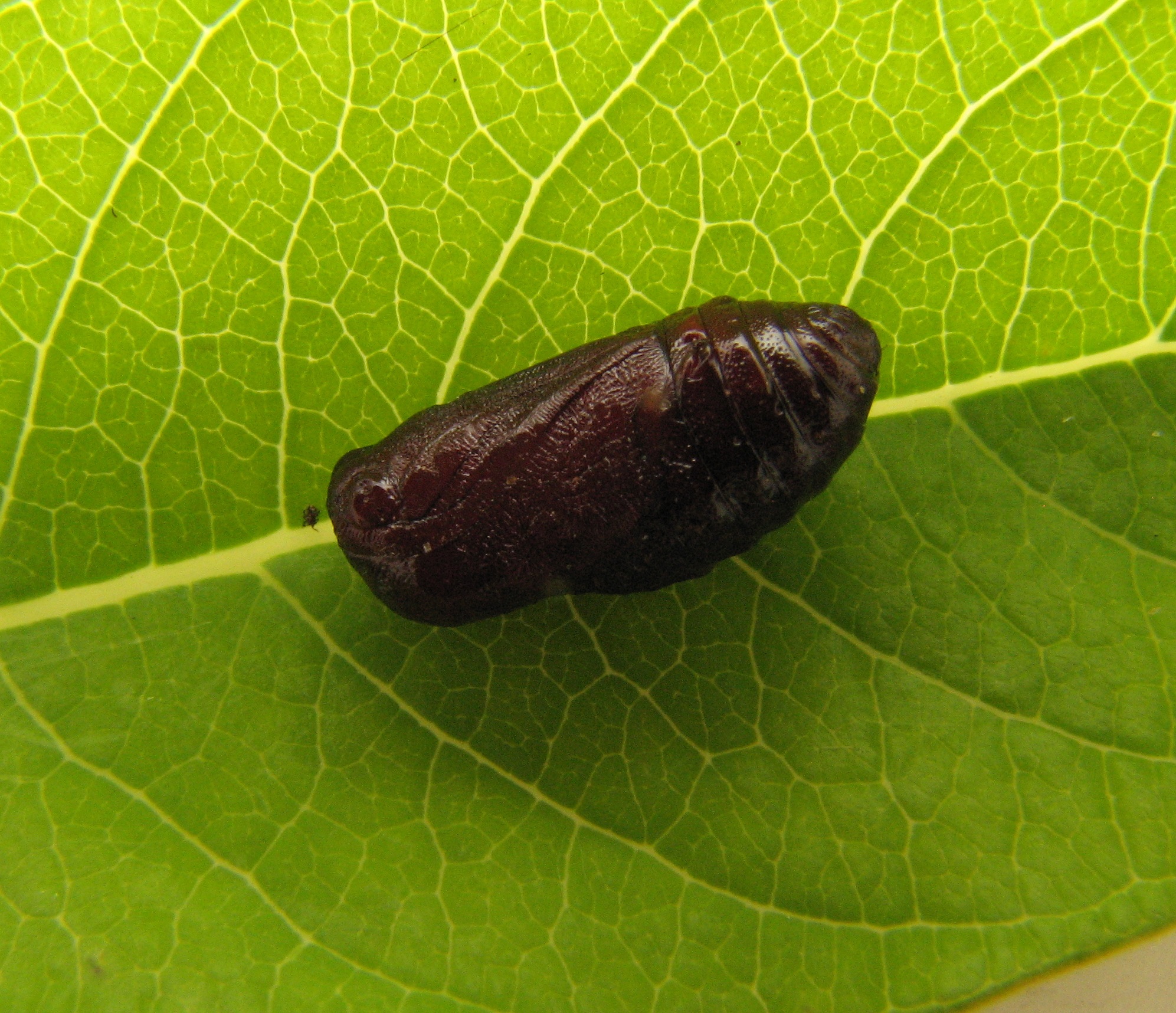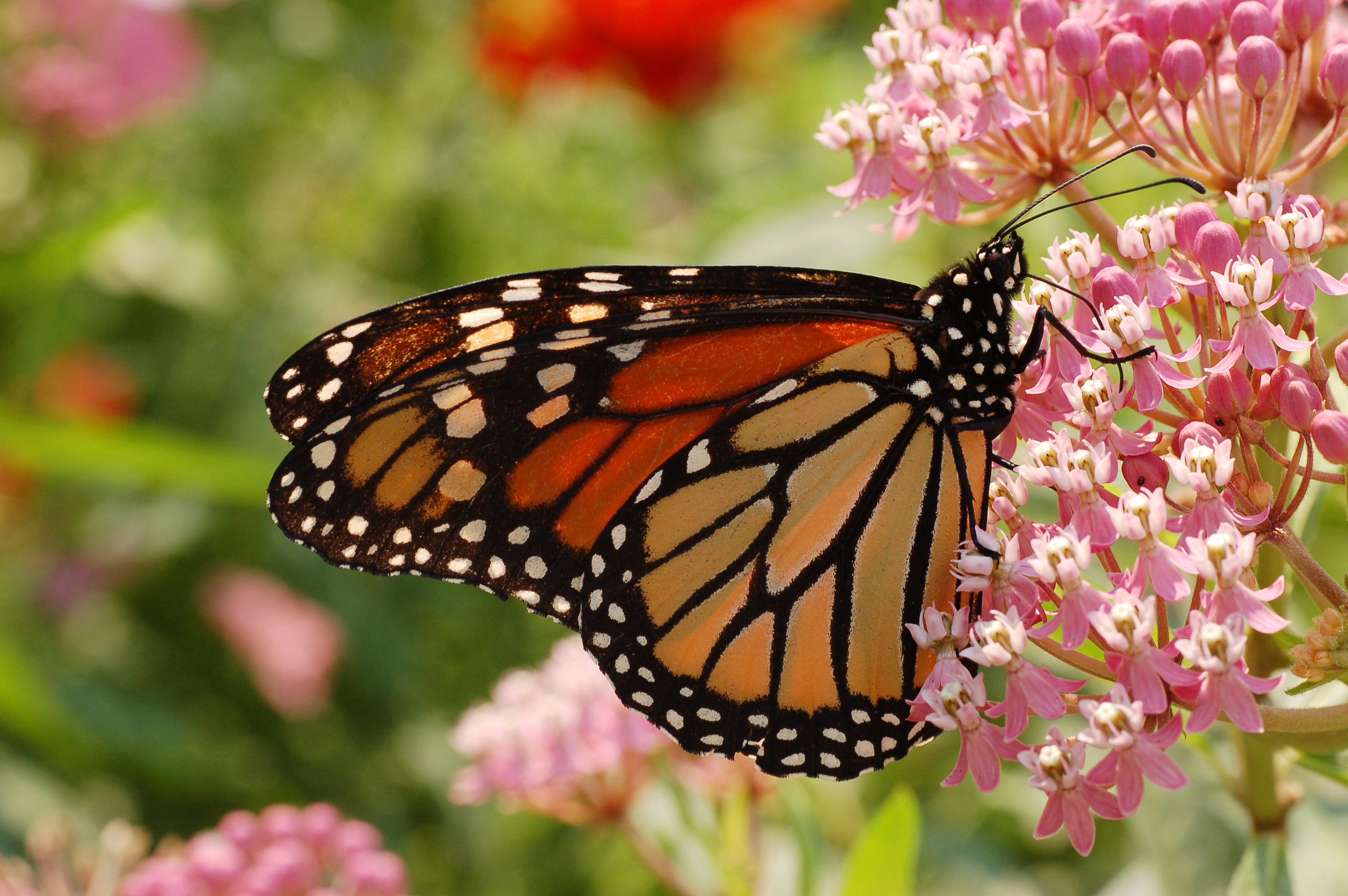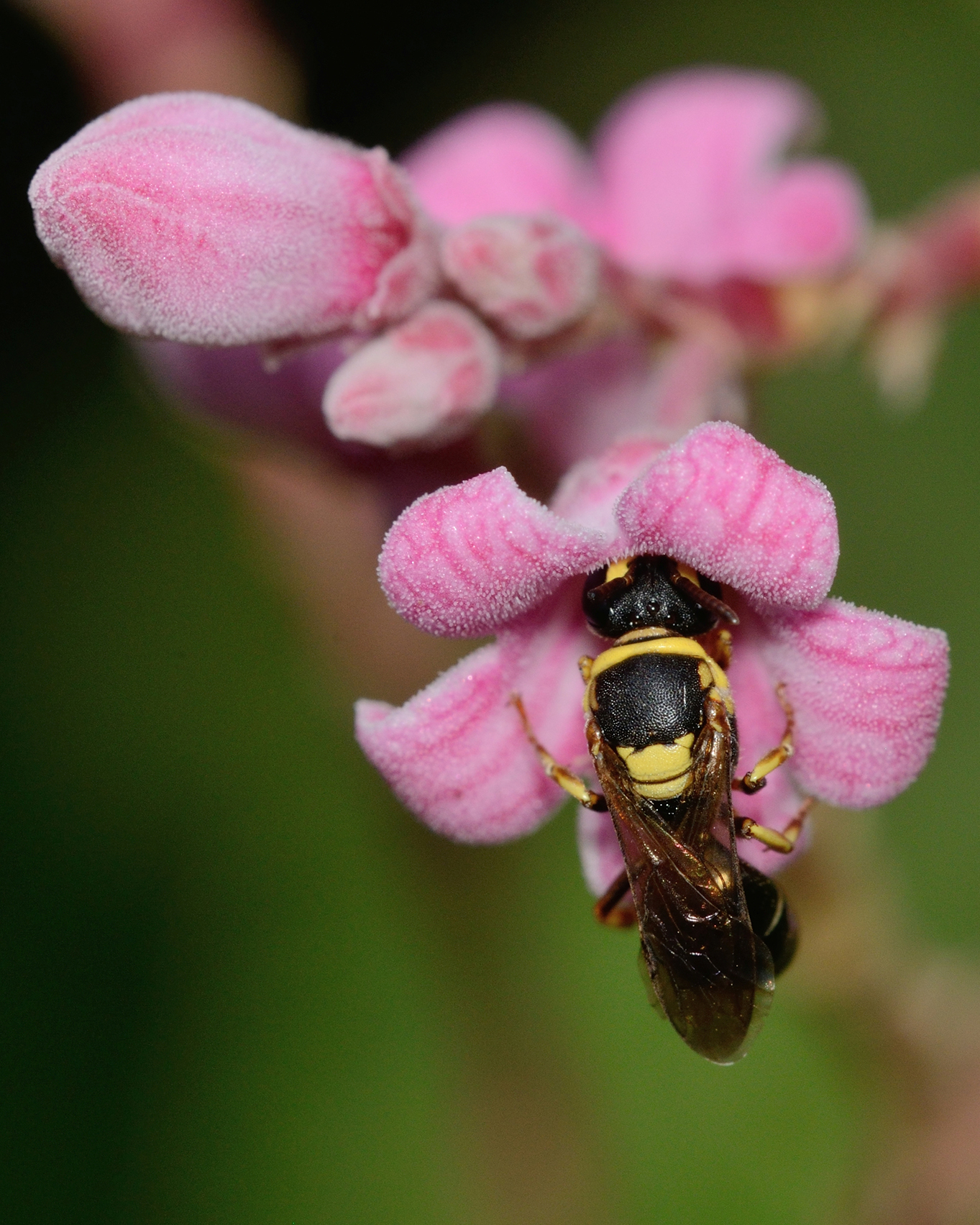|
Milkweed Tussock Moth
''Euchaetes egle'', the milkweed tiger moth or milkweed tussock moth, is a moth in the family Erebidae and the tribe Arctiini, the tiger moths. The species was first described by Dru Drury in 1773. It is a common mid- through late summer feeder on milkweeds and dogbane. Like most species in this family, it has chemical defenses it acquires from its host plants, in this case, cardiac glycosides. These are retained in adults and deter bats, and presumably other predators, from feeding on them.Hristov, N. L. & Conner, W. E. (2005). "Effectiveness of tiger moth (Lepidoptera, Arctiidae) chemical defenses against an insectivorous bat (''Eptesicus fuscus'')". ''Chemoecology''. 15 (2): 105–113. Only very high cardiac glycoside concentrations deterred bats, however. Adults indicate their unpalatability to bats with ultrasonic clicks from their tymbal organs. Range It is found from southern Canada and south through Texas and Florida in North America.*Wagner, D. L. (2005). ''Caterpillars ... [...More Info...] [...Related Items...] OR: [Wikipedia] [Google] [Baidu] |
Dru Drury
Dru Drury (4 February 1724 – 15 December 1803) was a British collector of natural history specimens and an entomologist. He had specimens collected from across the world through a network of ship's officers and collectors including Henry Smeathman. His collections were utilized by many entomologists of his time to describe and name new species and is best known for his book ''Illustrations of natural history'' which includes the names and descriptions of many insects, published in parts from 1770 to 1782 with copperplate engravings by Moses Harris. Life Dru Drury was born in Lad Lane, Wood Street, London where his father, also Dru [also given as "Drew"] Drury (1688–1763), was a Freedom of the City of London, citizen, goldsmith and silversmith of the City of London, and his second wife Mary, daughter of Dr Hesketh, chaplain to Anne, Queen of Great Britain, Queen Anne. The elder Dru Drury's grandfather, William, Lord of the Manor of Colne, Cambridgeshire, Colne (Drurys mano ... [...More Info...] [...Related Items...] OR: [Wikipedia] [Google] [Baidu] |
Erebidae
The Erebidae are a family of moths in the superfamily Noctuoidea. The family is among the largest families of moths by species count and contains a wide variety of well-known macromoth groups. The family includes the underwings ('' Catocala''); litter moths (Herminiinae); tiger, lichen, and wasp moths (Arctiinae); tussock moths (Lymantriinae), including the arctic woolly bear moth (''Gynaephora groenlandica''); piercing moths ( Calpinae and others); micronoctuoid moths (Micronoctuini); snout moths (Hypeninae); and zales, though many of these common names can also refer to moths outside the Erebidae (for example, crambid snout moths). Some of the erebid moths are called owlets. The sizes of the adults range from among the largest of all moths (> wingspan in the black witch) to the smallest of the macromoths ( wingspan in some of the Micronoctuini). The coloration of the adults spans the full range of dull, drab, and camouflaged (e.g., ''Zale lunifera'' and litter moths) to vi ... [...More Info...] [...Related Items...] OR: [Wikipedia] [Google] [Baidu] |
Arctiini (erebid Moths)
__NOTOC__ The Arctiini are a tribe of tiger moths in the family Erebidae. Systematics The tribe was previously treated as a higher-level taxon, the subfamily Arctiinae, within the lichen and tiger moth family, Arctiidae. The ranks of the family and its subdivisions were lowered in a recent reclassification while keeping the contents of the family and its subdivisions largely unchanged. These changes in rank triggered changes in the suffixes in the names. The subfamily Arctiinae as a whole was reclassified as the subfamily Arctiinae within the family Erebidae. The original subfamily Arctiinae was lowered to tribe status as Arctiini, and its original tribes were lowered to subtribe status by changing the -ini suffix to -ina (e.g., Callimorphini became Callimorphina). Thus, the name "Arctiinae" used to refer to only a subgroup of the entire group of lichen and tiger moths, but now it refers to the entire group. Subtribes (former tribes) Many genera in the tribe have been classifi ... [...More Info...] [...Related Items...] OR: [Wikipedia] [Google] [Baidu] |
Species Description
A species description is a formal description of a newly discovered species, usually in the form of a scientific paper. Its purpose is to give a clear description of a new species of organism and explain how it differs from species that have been described previously or are related. In order for species to be validly described, they need to follow guidelines established over time. Zoological naming requires adherence to the ICZN code, plants, the ICN, viruses ICTV, and so on. The species description often contains photographs or other illustrations of type material along with a note on where they are deposited. The publication in which the species is described gives the new species a formal scientific name. Some 1.9 million species have been identified and described, out of some 8.7 million that may actually exist. Millions more have become extinct throughout the existence of life on Earth. Naming process A name of a new species becomes valid (available in zo ... [...More Info...] [...Related Items...] OR: [Wikipedia] [Google] [Baidu] |
Milkweed
''Asclepias'' is a genus of herbaceous, perennial, flowering plants known as milkweeds, named for their latex, a milky substance containing cardiac glycosides termed cardenolides, exuded where cells are damaged. Most species are toxic to humans and many other species, primarily due to the presence of cardenolides, although, as with many such plants, there are species that feed upon them (e.g. their leaves) and from them (e.g. their nectar). Most notable are monarch butterflies, who use and require certain milkweeds as host plants for their larvae. The genus contains over 200 species distributed broadly across Africa, North America, and South America. It previously belonged to the family Asclepiadaceae, which is now classified as the subfamily Asclepiadoideae of the dogbane family, Apocynaceae. The genus was formally described by Carl Linnaeus in 1753, who named it after Asclepius, the Greek god of healing. Flowers Members of the genus produce some of the most complex flowe ... [...More Info...] [...Related Items...] OR: [Wikipedia] [Google] [Baidu] |
Dogbane
Dogbane, dog-bane, dog's bane, and other variations, some of them regional and some transient, are names for certain plants that are reputed to kill or repel dogs; "bane" originally meant "slayer", and was later applied to plants to indicate that they were poisonous to particular creatures. History of the term The earliest reference to such names in common English usage was in the 16th century, in which they were applied to various plants in the Apocynaceae, in particular ''Apocynum''. Some plants in the Asclepiadoideae, now a subfamily of the Apocynaceae, but until recently regarded as the separate family Asclepiadaceae, were also called dogbane even before the two families were united. It is not clear how much earlier the name had been in use in the English language, which originated about 1000 years earlier in mediaeval times. However, centuries before the appearance of the English language, Pedanius Dioscorides, in his ''De Materia Medica'', had already described members of ... [...More Info...] [...Related Items...] OR: [Wikipedia] [Google] [Baidu] |
Cardiac Glycoside
Cardiac glycosides are a class of organic compounds that increase the output force of the heart and decrease its rate of contractions by inhibiting the cellular sodium-potassium ATPase pump. Their beneficial medical uses are as treatments for congestive heart failure and cardiac arrhythmias; however, their relative toxicity prevents them from being widely used. Most commonly found as secondary metabolites in several plants such as foxglove plants, these compounds nevertheless have a diverse range of biochemical effects regarding cardiac cell function and have also been suggested for use in cancer treatment. Classification General structure The general structure of a cardiac glycoside consists of a steroid molecule attached to a sugar (glycoside) and an R group. The steroid nucleus consists of four fused rings to which other functional groups such as methyl, hydroxyl, and aldehyde groups can be attached to influence the overall molecule's biological activity. Cardiac glycosi ... [...More Info...] [...Related Items...] OR: [Wikipedia] [Google] [Baidu] |
Instar
An instar (, from the Latin '' īnstar'', "form", "likeness") is a developmental stage of arthropods, such as insects, between each moult (''ecdysis''), until sexual maturity is reached. Arthropods must shed the exoskeleton in order to grow or assume a new form. Differences between instars can often be seen in altered body proportions, colors, patterns, changes in the number of body segments or head width. After shedding their exoskeleton (moulting), the juvenile arthropods continue in their life cycle until they either pupate or moult again. The instar period of growth is fixed; however, in some insects, like the salvinia stem-borer moth, the number of instars depends on early larval nutrition. Some arthropods can continue to moult after sexual maturity, but the stages between these subsequent moults are generally not called instars. For most insect species, an ''instar'' is the developmental stage of the larval forms of holometabolous (complete metamorphism) or nymphal forms o ... [...More Info...] [...Related Items...] OR: [Wikipedia] [Google] [Baidu] |
Sociality
Sociality is the degree to which individuals in an animal population tend to associate in social groups (gregariousness) and form cooperative societies. Sociality is a survival response to evolutionary pressures. For example, when a mother wasp stays near her larvae in the nest, parasites are less likely to eat the larvae. Biologists suspect that pressures from parasites and other predators Natural selection, selected this behavior in wasps of the Family (biology), family Vespidae. This wasp behaviour evidences the most fundamental characteristic of animal sociality: parental investment. Parental investment is any expenditure of resources (time, energy, social capital) to benefit one's offspring. Parental investment detracts from a parent's capacity to invest in future reproduction and aid to Family, kin (including other offspring). An animal that cares for its young but shows no other sociality traits is said to be ''subsocial''. An animal that exhibits a high degree of social ... [...More Info...] [...Related Items...] OR: [Wikipedia] [Google] [Baidu] |
Pentatomidae
Pentatomidae is a family of insects belonging to the order Hemiptera, generally called shield bugs or stink bugs. Pentatomidae is the largest family in the superfamily Pentatomoidea, and contains around 900 genera and over 4700 species.Robert G. Foottit, Peter H. Adler ''Insect Biodiversity: Science and Society'', John Wiley and Sons, 2009, As hemipterans, the pentatomids have Hemiptera#Mouthparts, piercing sucking mouthparts, and most are herbivore, phytophagous, including several species which are severe pests on Agriculture, agricultural crops. However, some species, particularly in the subfamily Asopinae, are predatory and may be considered beneficial. Etymology The name "Pentatomidae" is from the Greek language, Greek ''pente'' meaning "five" and ''tomos'' meaning "section", and refers to the five segments of their antennae. Pentatomids are generally called "shield bugs" in British English language , English, or "stink bugs" in American English. However, the term shield bu ... [...More Info...] [...Related Items...] OR: [Wikipedia] [Google] [Baidu] |
Euchaetes Egle Pupa
''Euchaetes'' is a genus of moths in the family Erebidae. It was described by Thaddeus William Harris in 1841. Species * '' Euchaetes albaticosta'' (Dyar, 1912) * ''Euchaetes albicosta'' (Walker, 1855) * ''Euchaetes antica'' (Walker, 1856) * ''Euchaetes bicolor'' (Rothschild, 1935) * ''Euchaetes bolteri'' (Stretch, 1885) * ''Euchaetes castalla'' (Barnes & McDunnough, 1910) * ''Euchaetes cressida'' (Dyar, 1913) * ''Euchaetes egle'' (Drury, 1773) – milkweed tiger moth * ''Euchaetes elegans'' (Stretch, 1874) * ''Euchaetes expressa'' (H. Edwards, 1884) * '' Euchaetes fusca'' (Rothschild, 1910) * ''Euchaetes gigantea'' (Barnes & McDunnough, 1910) * ''Euchaetes mitis'' Schaus, 1910 * '' Euchaetes pannycha'' (Dyar, 1918) * '' Euchaetes perlevis'' (Grote, 1882) * '' Euchaetes polingi'' (Cassino, 1928) * ''Euchaetes promathides'' (Druce, 1894) * '' Euchaetes psara'' (Dyar, 1907) * '' Euchaetes rizoma'' (Schaus, 1896) * ''Euchaetes zella ''Euchaetes zella'' is a moth of the family ... [...More Info...] [...Related Items...] OR: [Wikipedia] [Google] [Baidu] |
Danaus Plexippus
The monarch butterfly or simply monarch (''Danaus plexippus'') is a milkweed butterfly (subfamily Danainae) in the family Nymphalidae. Other common names, depending on region, include milkweed, common tiger, wanderer, and black-veined brown. It is amongst the most familiar of North American butterflies and an iconic pollinator, although it is not an especially effective pollinator of milkweeds. Its wings feature an easily recognizable black, orange, and white pattern, with a wingspan of . A Müllerian mimic, the viceroy butterfly, is similar in color and pattern, but is markedly smaller and has an extra black stripe across each hindwing. The eastern North American monarch population is notable for its annual southward late-summer/autumn instinctive Monarch butterfly migration, migration from the northern and central United States and southern Canada to Florida and Mexico. During the fall migration, monarchs cover thousands of miles, with a corresponding multigenerational return ... [...More Info...] [...Related Items...] OR: [Wikipedia] [Google] [Baidu] |

.jpg)





